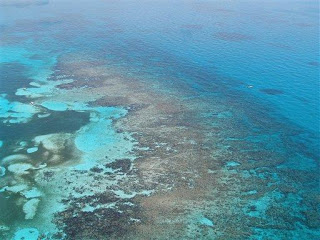 |
| Coral Reef Oil Damage (AP/NOAA image) |
Monica Heger
LiveScience
“It reminds me of going to a family funeral,” said Charles Fisher, a biology professor at Penn State University, and chief scientist on a recent mission to study the impact of the Gulf oil spill on coral in the area.
Just like seeing extended family, “it’s always fun to go into the deep sea, and we saw a lot of life,” he said. “But, on the other hand the reason you’re there is not a happy reason. Some corals have been severely slimed. Some are dead or dying.”
The Woods Hole Oceanographic Institution in Woods Hole, Mass., led a nine-day mission this month to study the effects of the oil spill on life at the bottom of the sea. A team of scientists set out on a research vessel, spending just over a week in the middle of the Gulf of Mexico.
Equipped with both an autonomous submarine called Sentry, as well as a submersible called Alvin, the scientists photographed, mapped and collected samples from the Gulf nearly 24 hours a day. They completed six dives on Alvin, and set up a camera near the site of a dying coral reef, which will snap photos every hour for the next two months monitoring the coral’s heath.
Typical Gulf day
A typical day on the ship actually began the night before, Fisher told OurAmazingPlanet. The scientists would program and launch the robot Sentry, which would scout the area, returning sometime between 2 a.m. and 6 a.m. After collecting Sentry, the scientists would then go through the data collected, and make the final preparations for the human dive in Alvin.
Around 8 a.m., Alvin’s pilot and two scientists would climb aboard the 6-foot-wide (1.8 meters) sphere within the submersible and begin their hour-and-a-half-long descent to the seafloor.
The next six or so hours were spent on the seafloor collecting samples and taking photos, and then the scientists would surface around 5 p.m., just in time to begin the night’s work.
A smoking gun
The expedition follows on the heels of an earlier cruise in which many of the same scientists found dozens of coral species 7 miles (11 kilometers) from the spill site that appeared to be dead or dying. The scientists revisited that same site, looked for other coral reefs, and took photos and samples from both the sick coral as well as another colony of reefs that appeared healthy.

Be the first to comment on "Corals ‘Severely Slimed’ After Oil Spill, Expedition Finds"